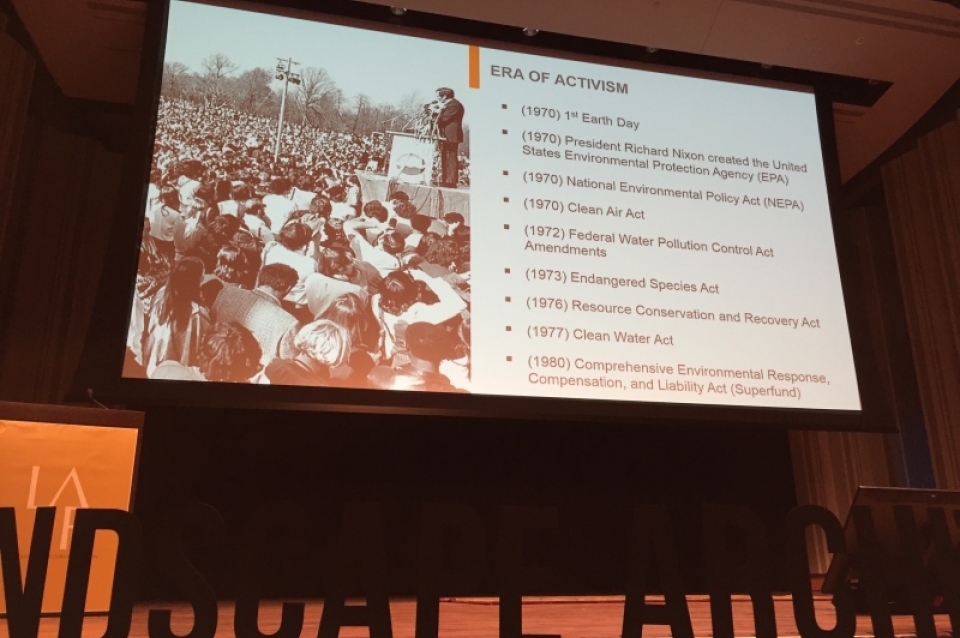July 8, 2016
Stuart Weitzman School of Design
102 Meyerson Hall
210 South 34th Street
Philadelphia, PA 19104
Get the latest Weitzman news in your Inbox
Media Contact
Michael Grant
mrgrant@design.upenn.edu
215.898.2539
Billy Fleming, PhD Candidate in the Department of City and Regional Planning, writes about the Landscape Architecture Foundation’s Summit on Landscape Architecture and the Future hosted by PennDesign last month for ASLA's The Dirt. Following is an excerpt.
Social justice. Environmental stewardship. Enduring aesthetic beauty. An expanded role for landscape architects. These were the predominant themes in the Landscape Architecture Foundation (LAF)’s Summit on Landscape Architecture and the Future at the University of Pennsylvania in Philadelphia.
These goals are admirable and worthy of the profession’s best efforts. But what many of the speakers at the summit neglected to discuss – as did the authors of the original declaration 50 years ago, upon which LAF was established – is that landscape architects must increase their access to power if their hope of a society more reflective of their core values is to be realized. The act of envisioning alternative futures – something landscape architects excel at – is a political act. It’s time we build upon our design acumen by participating directly in the legislative landscape.
So when the LAF asks what we need to prioritize over the next 50 years, my answer is the continued development of design intelligence through research and practice is a necessary but insufficient means of achieving the profession’s lofty ambitions. We also need a strategy for placing more landscape architects into the elected, appointed, and bureaucratic offices where the big decisions about how to plan, design, and manage the land are made. This is how we construct a positive feedback loop between private and academic practice, which can bring invention and creativity, and government, which offers a tremendous scale of impact.
Read the full article on The Dirt.


 Expand Image
Expand Image



